STUDENTS PROJECTS
PROJECTS2013
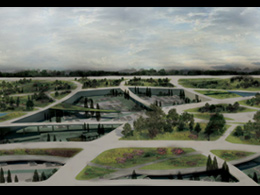
24 January, 2015
Cemeteries in the cities
The position of cemeteries in the cities varies historically depending on the relationship between people and death.
Student : Kapsaski Stefania-Alkisti
Supervisor: Yiannis Aisopos
Architecture Department of Patras
Presentation date: 27/6/2014
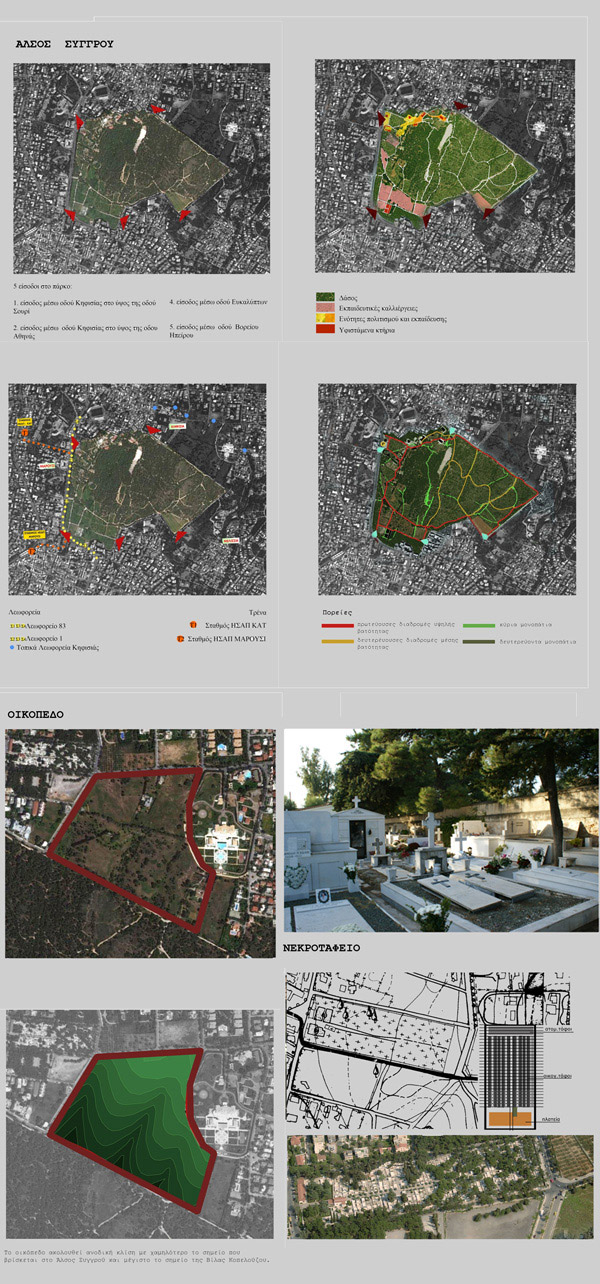
The position of cemeteries in the cities varies historically depending on the relationship between people and death. The close relationship between people and the death during the Medieval Ages is evident by the coexistence of the living and the dead in the urban space and also by the importance given by the people to the fact of death. The cemeteries were used for burial but also hosted the public activities of the society and constituted the main public space of the city.
Over the years, from public spaces were transformed into places of reflection and calmness and today, especially in Greece are in their majority non-designed space, exclusively for the burial while occupying large parts of the cities. The cemeteries do not have anymore the sanctity of the past let alone the character. They have moved out of cities and they are often neglected and aversive. Death is an unpleasant event to be processed instantly, discreetly, and the memory of his death is not desirable.
Why should a place within the web of a city not be used by the residents for further use other than the burial? Could cemeteries be places for mourning and non mourning people?
The aim of this thesis is to redefine the relationship between the city and the cemetery and the replacement of the cemeteries by green, open public spaces where people of all ages will find inspiration for life and prepare for the death.
Basic principles for achieving this goal are:
The contact with the fact of death that will deal with the fear and will change the social perception
The correlation of the cemetery with other public uses, preserving the sanctity and importance of space
The design of the burial land
The site chosen is located in Athens, at Kifissia and is situated between three municipalities Kifissia, Maroussi and Melissia. More specifically, the plot borders with the existing cemetery of Kifissia and the forest Alsos Suggrou.
The basic principle for the design of the cemetery was the limit of the plot. The plot is bordered by a prime public space, a park and a "dead" space, a cemetery. The proposal is an expansion of the existing cemetery, which according to the regulations for the proper operation and management of cemeteries need expansion.
Starting from the streets of the surrounding area roads are created at the plot, adapted to the topography of the land and allow multiple combinations of paths to the visitor.
The park seems to be "quenched" as we move from the park to the city giving the location of urban squares that are created in the northern part of the land and leads to road in the south.
The main objective is the smooth transition from the cemetery to the forest, converting the land into a hybrid space. The park seems to lose it's strictly limits and spreads naturally at the landscape while the cemetery due to the high difference penetrates the subterranean land, tearing the earth and grows at a lower level. In several sections, the two uses are developed in parallel planes while everywhere there is a possibility of sight from the cemetery to the park and back.
Regarding the design of the cemetery, according to the existing legislation cemeteries should be designed on the basis of the following: fencing, green zone, street and segregation with the Hippodameian system. The required distances are 150m distance from the edge of an approved town plan, 75m from individual residences and 50 remote from individual houses being green space in this part and this is the category we will focus on.
The design of the cemeteries is based on the previous analysis; the layers follow the shape of the parts of the cemetery, creating pieces of Hippodamias system. The massive concrete tomb is replaced by a concrete shell defining the burial place, in the middle of which there will be plantation. The tombs are distributed in space by creating groups with different levels. The ossuary are located in the central routes and on the boundaries of the park and alternate with vertical planting and seating.
The church and the coffee of the cemetery are located in the central square, which is developed in different level, creating seats . The church is growing like a cave in the ground. At the entrance there is a stone wall which unfolds inside. In this wall the dead is being framed during the ceremony. The light enters from the top of the church and is refracted by a thin layer of water.
Entering at the cemetery, the visitor is immersed in the land, while in both sides there is water, which is used as a symbol from antiquity. The entrance includes reception, mortuary and warehouses. The sense of immersion is intensified by the existence of a planted area and finally peaks by crossing the wall.
The cemetery has been designed in order to help the visitor to overcome the loss. Following therefore the stages of mourning created spatial experiences which direct the visitor to the psychology of acceptance.
Regarding the design of the park, planting gradually disappears from the park to the city, from unregulated and wooded transformed into organized and civil. The plants also follow the same logic. The game in planting is reinforced by the plates that become smaller as we approach the park. The park includes a library, an exhibition space, a restaurant and a coffee. The library and the restaurant appears as a hole in the landscape while the exhibition space and coffee meet each other at the level of the coffee as the exhibition space follows a downward path.
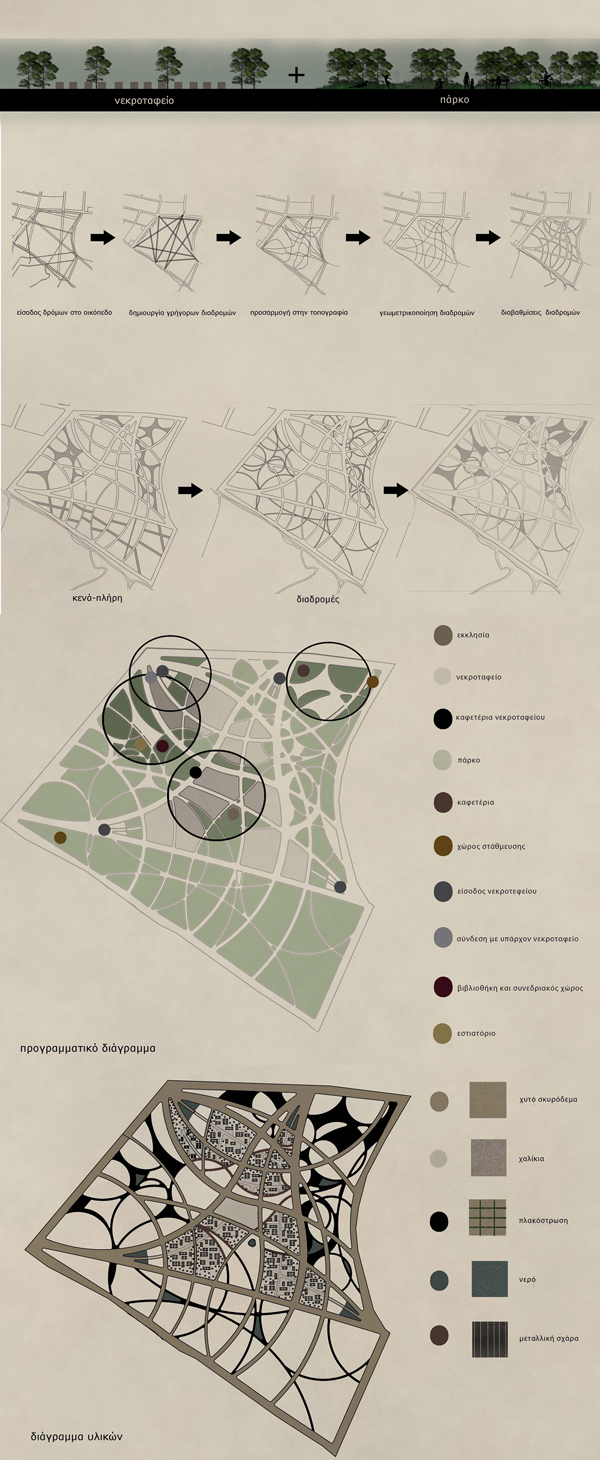
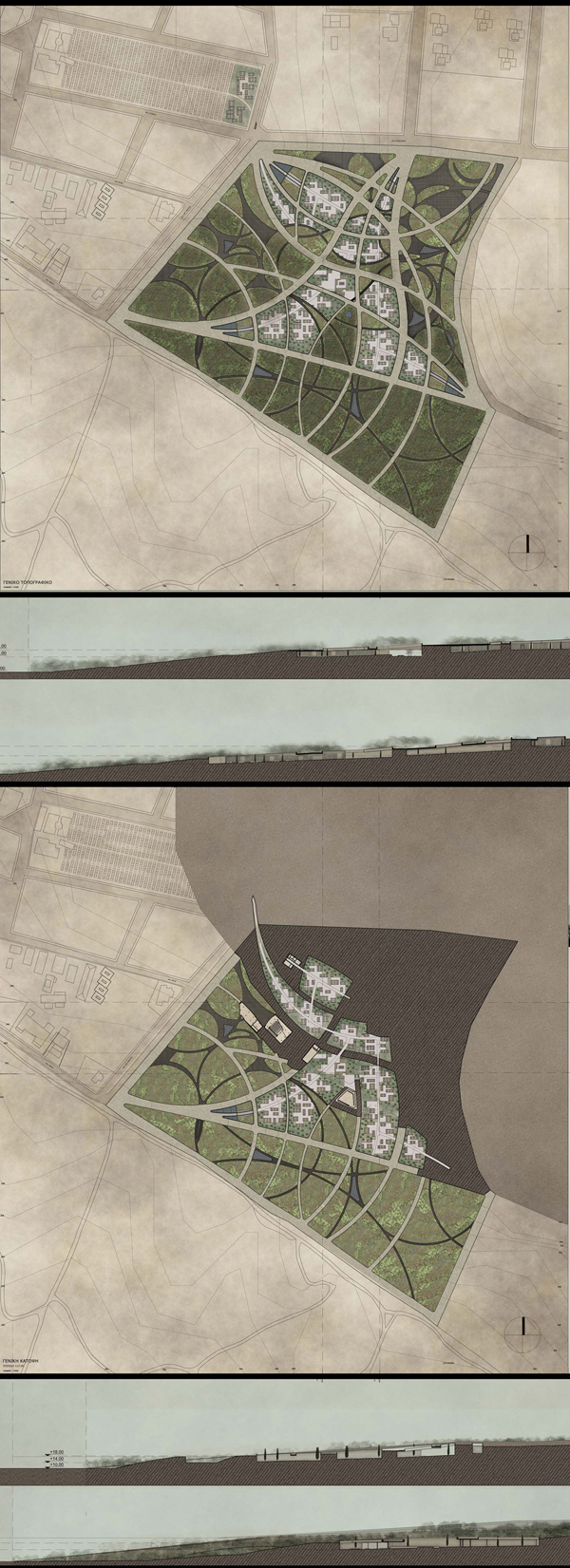
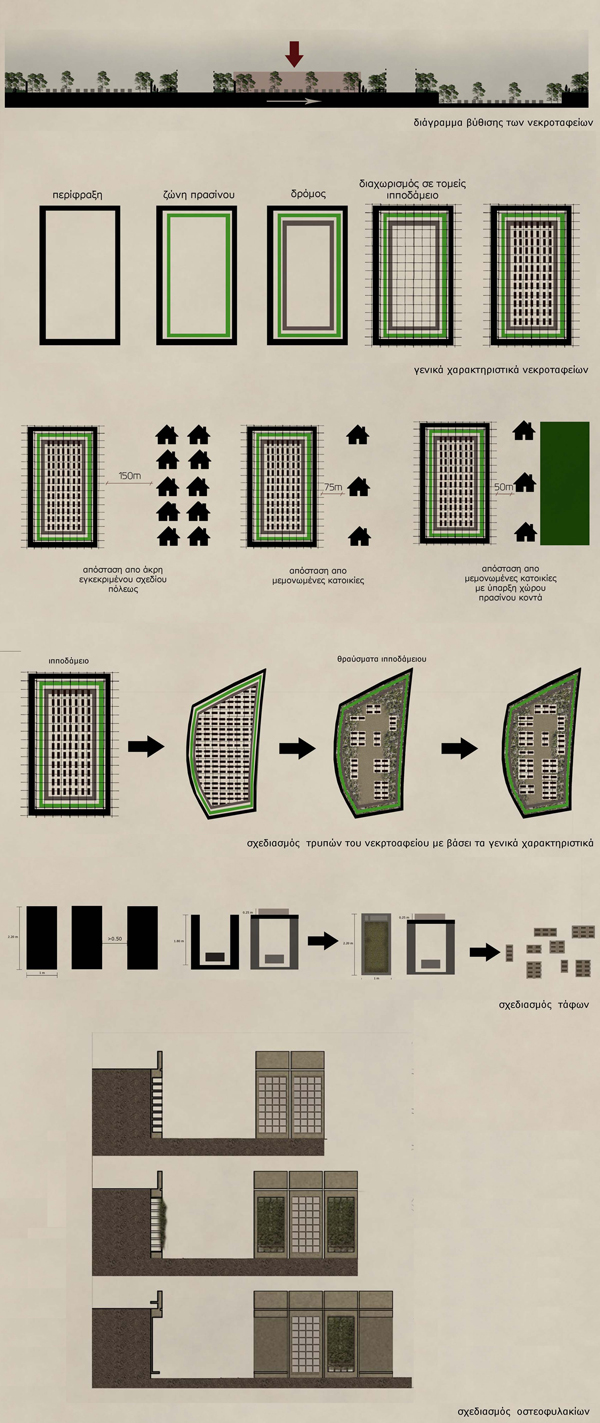
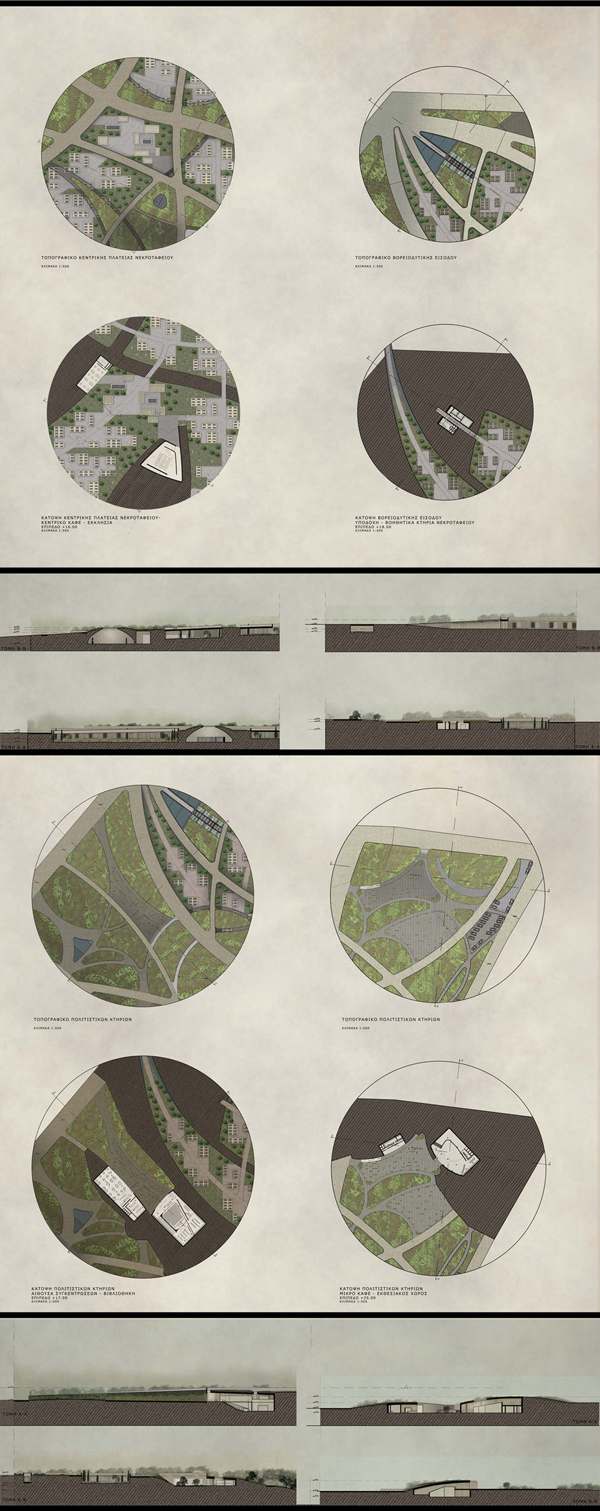
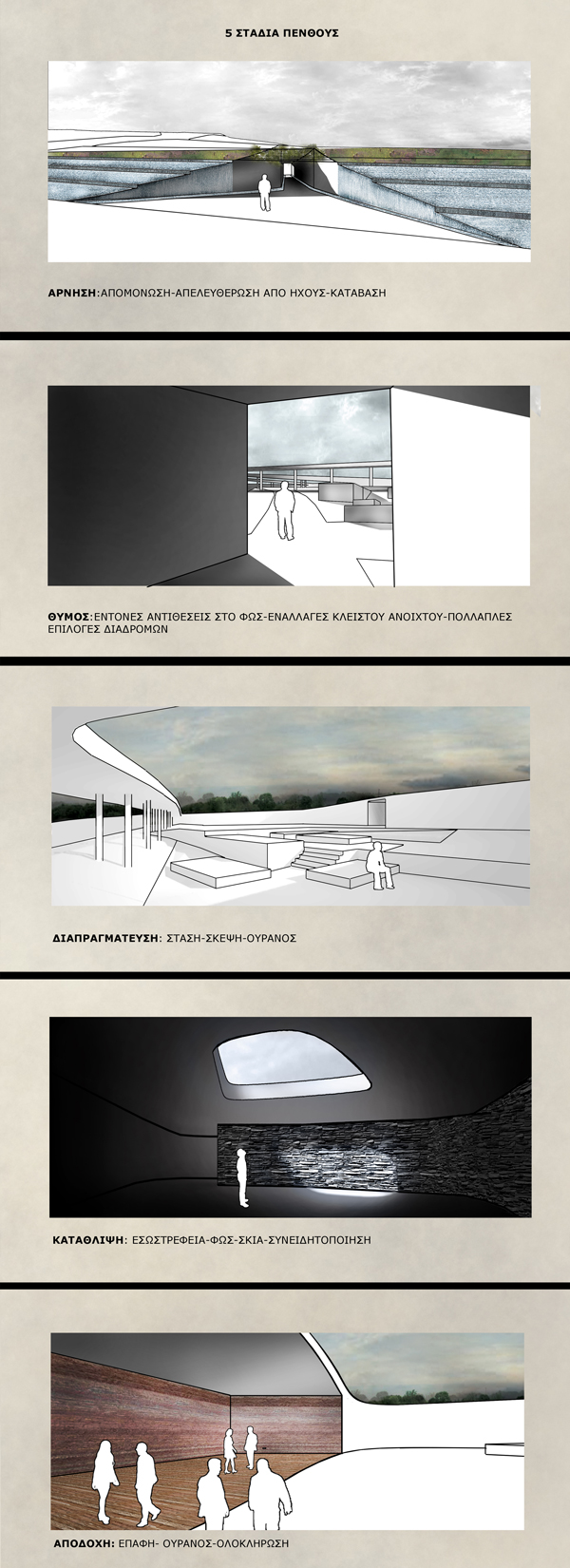
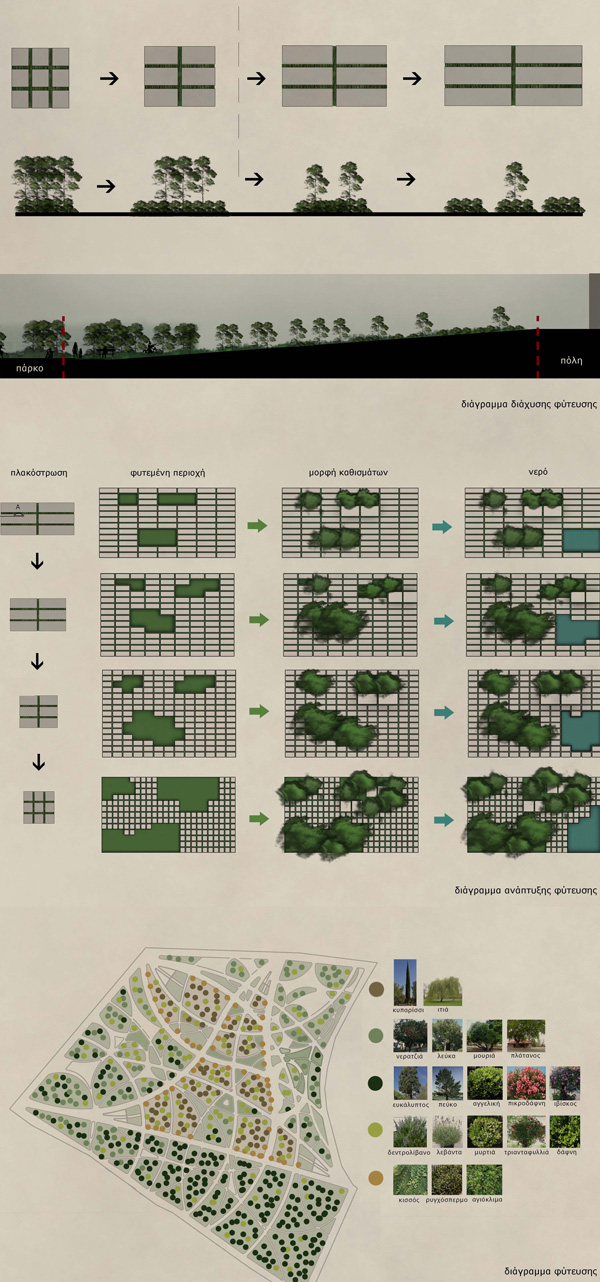
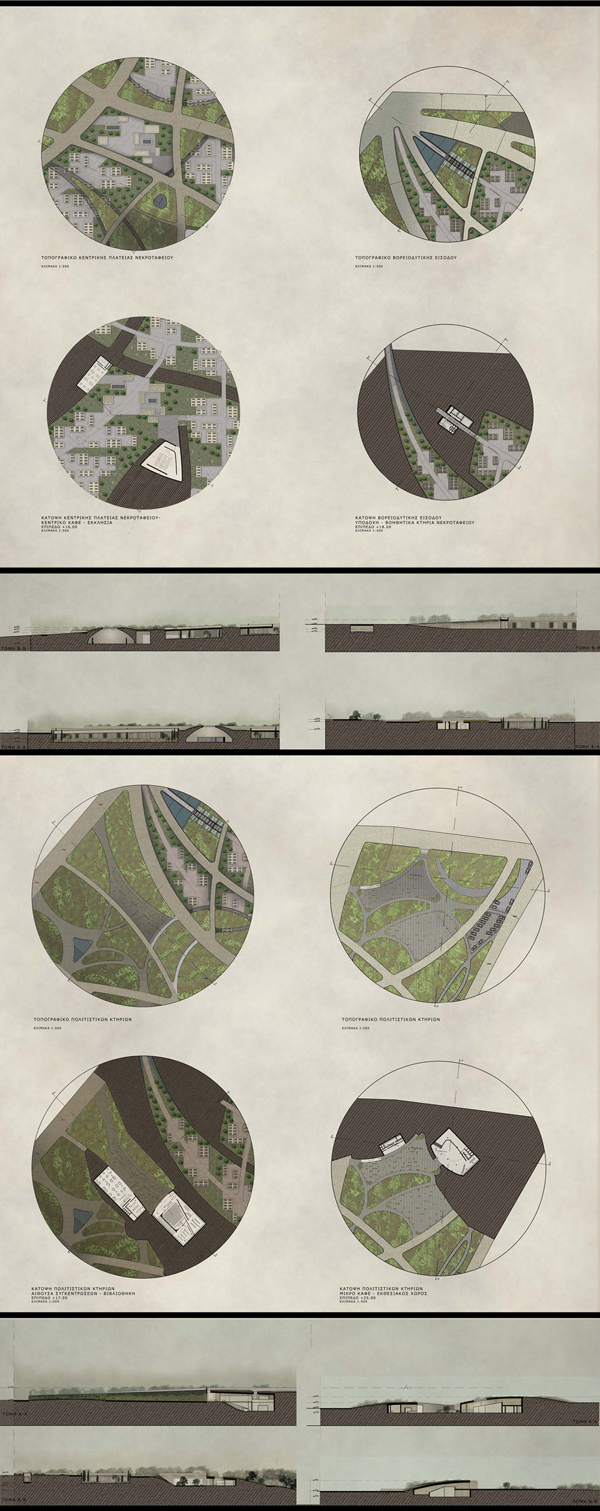
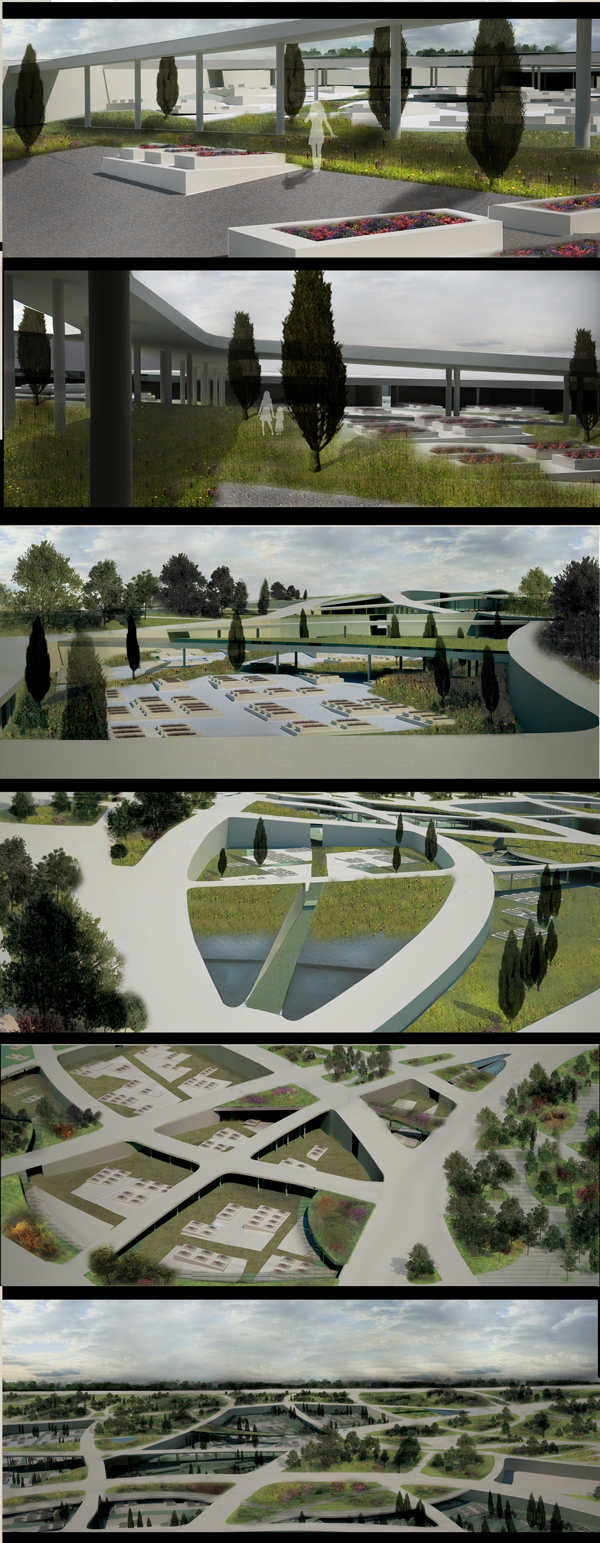
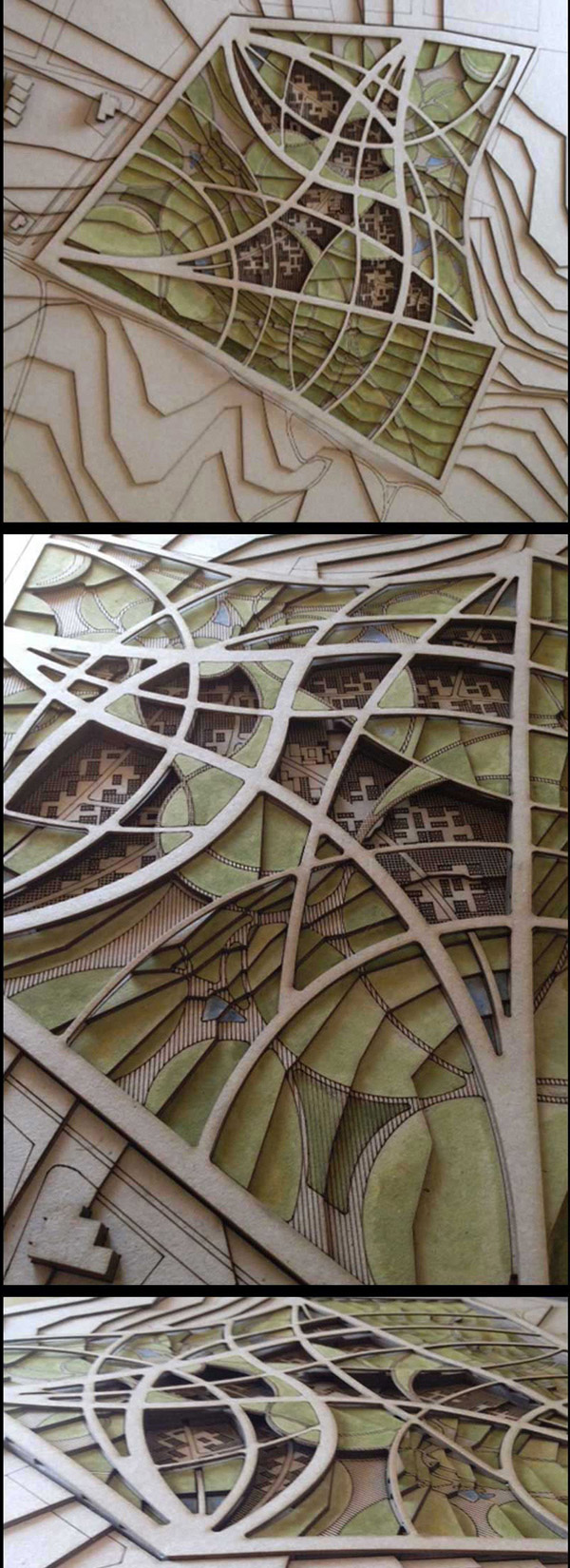
Related articles:
- “nekron topio” ( 29 April, 2011 )
- Texas American Society of Landscape Architects Student Competition ( 18 April, 2012 )
- Buffer zone. The land of living ( 13 April, 2015 )










